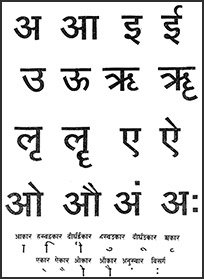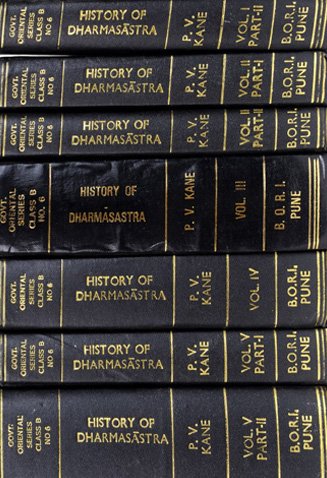Ashtama, Aṣṭama, Āṣṭama: 15 definitions
Introduction:
Ashtama means something in Hinduism, Sanskrit, Jainism, Prakrit, Marathi. If you want to know the exact meaning, history, etymology or English translation of this term then check out the descriptions on this page. Add your comment or reference to a book if you want to contribute to this summary article.
The Sanskrit terms Aṣṭama and Āṣṭama can be transliterated into English as Astama or Ashtama, using the IAST transliteration scheme (?).
In Hinduism
Vyakarana (Sanskrit grammar)
Source: Wikisource: A dictionary of Sanskrit grammarAṣṭama (अष्टम).—A term used by ancient grammarians for the vocative case.

Vyakarana (व्याकरण, vyākaraṇa) refers to Sanskrit grammar and represents one of the six additional sciences (vedanga) to be studied along with the Vedas. Vyakarana concerns itself with the rules of Sanskrit grammar and linguistic analysis in order to establish the correct context of words and sentences.
Yoga (school of philosophy)
Source: ORA: Amanaska (king of all yogas): A Critical Edition and Annotated Translation by Jason Birch1) Aṣṭama (अष्टम) refers to the “eighth day” (of practising Tantra), according to the Brahmayāmala-tantra (or Picumata), an early 7th century Śaiva text consisting of twelve-thousand verses.—Accordingly, [while describing a haṭha-sādhana (foreceful practice)]: “[...] On the eighth day (aṣṭama), the Sādhaka sees the shadow of Aghorī. Thus content, she gives [a boon, saying to the Sādhaka], ‘Good, my dear! Choose a boon: either lord of the earth, immortality, levitation, [entry into the] nether-worlds, coming and going through the sky, invisibility, the elixir of mercury, the wish-fulfilling gem, the [magical] sword, the [seven-league] sandals or the [occult] eye collyrium’ [...]”
2) Aṣṭama (अष्टम) refers to the “eighth (year)” (of Yogic breathing exercises), according to the Śivayogadīpikā, an ancient Sanskrit text dealing with Yoga possibly corresponding to the Śivayoga quoted in Śivānanda’s Yogacintāmaṇi.—Accordingly, [while describing a sequence of Haṭhayoga practices]: “Thus, by means of this Haṭhayoga which has eight auxiliaries, those [students who are] life-long celibates obtain the Siddhis of the [best of Sages] because of their untiring practice. [...] In the seventh year, he can leave the earth and in the eighth (aṣṭama) [year], the [yogic] powers [such as minimization, etc.,] arise for him. In the ninth year, he can move in the atmosphere, travel in [all] directions and has a body [as hard as] a diamond. [...]”.

Yoga is originally considered a branch of Hindu philosophy (astika), but both ancient and modern Yoga combine the physical, mental and spiritual. Yoga teaches various physical techniques also known as āsanas (postures), used for various purposes (eg., meditation, contemplation, relaxation).
Dharmashastra (religious law)
Source: HAL: The function of the Vṛṣasārasaṃgraha in the Śivadharma corpus (ds)Aṣṭama (अष्टम) refers to the “eighth part (of the day)”, according to the Vṛṣasārasaṃgraha: A Sanskrit text of twenty-four chapters contained in the Śivadharma corpus dealing with Dharma (religious duties).—Accordingly, [verse 11.52-53]: “He should go on his alms round visiting seven houses at the eighth part of the day (aṣṭama) [divasasyāṣṭama]. He should not sit down, he should not stay, and he should not say ‘Give me!’ He should live on what is available, on eight bites a day. He should not stick to items of clothes, food or a bed for long”.

Dharmashastra (धर्मशास्त्र, dharmaśāstra) contains the instructions (shastra) regarding religious conduct of livelihood (dharma), ceremonies, jurisprudence (study of law) and more. It is categorized as smriti, an important and authoritative selection of books dealing with the Hindu lifestyle.
In Jainism
Jain philosophy
Source: archive.org: Anekanta Jaya Pataka of Haribhadra SuriAṣṭama (अष्टम) (Sanskrit; in Prakrit: Atthama) refers to a kind of external penance, as occurring in the Anekāntajayapatākā-prakaraṇa, a Śvetāmbara Jain philosophical work written by Haribhadra Sūri.—[Cf. Vol. I, P. 28, l. 32]—Ṣaṣṭha (Prakrit: Chaṭṭha) and Aṣṭama (Prakrit: Atthama) are each a kind of external penance—mortification of flesh Every day one takes two meals So one who gives up one meal on the first day, two on the second and one on the third and thus gives up meals up, to the fourth, is said to be practising ‘caturtha’. Similarly one who gives up two meals on each of the two days and one meal on a previous day and one at the end, and, thus gives up meals up to the sixth, is said to be practising ‘ṣaṣṭha’. One who practises ‘aṣṭama’ gives up meals up to the eighth.
-
Languages of India and abroad
Marathi-English dictionary
Source: DDSA: The Molesworth Marathi and English Dictionaryaṣṭama (अष्टम).—a (S -mā f) Eighth.
Source: DDSA: The Aryabhusan school dictionary, Marathi-Englishaṣṭama (अष्टम).—a (-mā f) Eighth.
Marathi is an Indo-European language having over 70 million native speakers people in (predominantly) Maharashtra India. Marathi, like many other Indo-Aryan languages, evolved from early forms of Prakrit, which itself is a subset of Sanskrit, one of the most ancient languages of the world.
Sanskrit dictionary
Source: DDSA: The practical Sanskrit-English dictionaryAṣṭama (अष्टम).—a. (-mī f.) Eighth; गर्भाष्टमेऽब्दे कुर्वित ब्राह्मणस्योपनायनम् (garbhāṣṭame'bde kurvita brāhmaṇasyopanāyanam) Manusmṛti 2.36.
-maḥ The eighth part.
-mī 1 The eighth day in a lunar half month; Manusmṛti 4.128; चतुर्दश्यष्टमी चैव अमावास्या च पूर्णिमा । पर्वाण्येतानि राजेन्द्र रवि- संक्रान्तिरेव च (caturdaśyaṣṭamī caiva amāvāsyā ca pūrṇimā | parvāṇyetāni rājendra ravi- saṃkrāntireva ca) ||. Viṣṇu. P.
2) Name of a medical plant (koṭā- latā; Mar. kṣīrakākoḷī).
3) अष्टका (aṣṭakā) Śrāddha; अष्टमी यज्ञपरता चातुर्मास्यनिषेवणम् (aṣṭamī yajñaparatā cāturmāsyaniṣevaṇam) Mahābhārata (Bombay) 13.142.15. [cf. L. octavus; Zend. astemo.]
--- OR ---
Āṣṭama (आष्टम).—[aṣṭamo bhāgaḥ, aṣṭama-ña] The 8th part; P.V.3.5-1.
Derivable forms: āṣṭamaḥ (आष्टमः).
Source: Cologne Digital Sanskrit Dictionaries: Shabda-Sagara Sanskrit-English DictionaryAṣṭama (अष्टम).—mfn.
(-maḥ-mī-maṃ) Eight. f. (-mī) 1. The eighth day of the fortnight. 2. A medicinal plant: see kṣīrakākolī, the last of a class of eight medicinal plants: see aṣṭavarga. E. aṣṭan with ḍaṭ affix and maṭ augment.
Source: Cologne Digital Sanskrit Dictionaries: Benfey Sanskrit-English DictionaryAṣṭama (अष्टम).—i. e. aṣṭan + ma. I. ord. num., f. mī, Eighth, [Mānavadharmaśāstra] 2, 36. Ii. m. An eighth, [Mānavadharmaśāstra] 10, 120. Iii. f. mī, The eigth day of a lunar half month, [Rājataraṅgiṇī] 5, 327; 412.
— Cf. [Latin] octavus;
Source: Cologne Digital Sanskrit Dictionaries: Cappeller Sanskrit-English DictionaryAṣṭama (अष्टम).—[feminine] ī eighth.
Source: Cologne Digital Sanskrit Dictionaries: Monier-Williams Sanskrit-English Dictionary1) Aṣṭama (अष्टम):—[from aṣṭan] mf(ī)n. the eighth, [Ṛg-veda ii, 5, 2 x, 114, 9; Atharva-veda] etc.
2) [v.s. ...] m. ([Pāṇini 5-3, 51 [sequens]]) the eighth part, [Manu-smṛti x, 120]
3) [v.s. ...] mfn. forming the eighth part of ([genitive case]), [Gautama-dharma-śāstra; Śulba-sūtra]
4) Āṣṭama (आष्टम):—m. ([from] aṣṭama), the eighth part, [Pāṇini]
Source: Cologne Digital Sanskrit Dictionaries: Yates Sanskrit-English DictionaryAṣṭama (अष्टम):—[(maḥ-mā-maṃ) a.] Eighth. (mī) 3. f. The eighth day of the fortnight; a plant.
[Sanskrit to German]
Sanskrit, also spelled संस्कृतम् (saṃskṛtam), is an ancient language of India commonly seen as the grandmother of the Indo-European language family (even English!). Closely allied with Prakrit and Pali, Sanskrit is more exhaustive in both grammar and terms and has the most extensive collection of literature in the world, greatly surpassing its sister-languages Greek and Latin.
Kannada-English dictionary
Source: Alar: Kannada-English corpusAṣṭama (ಅಷ್ಟಮ):—
1) [adjective] last of eight; eighth.
2) [adjective] equal to one of eight equal parts; eighth.
--- OR ---
Aṣṭama (ಅಷ್ಟಮ):—[noun] (astrol.) the eighth house from one’s birth-house.
Kannada is a Dravidian language (as opposed to the Indo-European language family) mainly spoken in the southwestern region of India.
See also (Relevant definitions)
Starts with (+20): Ashta-macitti, Ashta-manakam, Ashtamabhaga, Ashtamabhakta, Ashtamabhava, Ashtamacamdra, Ashtamaccaniyan, Ashtamada, Ashtamadesha, Ashtamadhu, Ashtamahabhaya, Ashtamahabhayatara, Ashtamahabhuta, Ashtamahamantra, Ashtamahamantrapaddhati, Ashtamaharasa, Ashtamaharoga, Ashtamahasiddhaya, Ashtamaka, Ashtamakalika.
Ends with: Apastama, Garbhashtama, Kujashtama, Sashtama, Spashtama, Viradashtama.
Full-text (+19): Ashtamakalika, Ashtamika, Garbhashtama, Ashtamaka, Ashtamamsha, Atthama, Ashtamadesha, Ashtamaccaniyan, Viradashtama, Ashtami, Ashtamabhava, Gopashtami, Kujashtama, Carudhi, Attamam, Ahvanana, Nagana, Arunoda, Chattha, Sashtha.
Relevant text
Search found 15 books and stories containing Ashtama, Aṣṭama, Astama, Āṣṭama, Aṣtama; (plurals include: Ashtamas, Aṣṭamas, Astamas, Āṣṭamas, Aṣtamas). You can also click to the full overview containing English textual excerpts. Below are direct links for the most relevant articles:
Garga Samhita (English) (by Danavir Goswami)
Verse 1.10.5 < [Chapter 10 - Description of the Birth of Lord Balarāma]
Verse 4.6.10 < [Chapter 6 - The Story of the Ayodhyā Women]
Verse 1.9.13 < [Chapter 9 - Description of Vasudeva’s Wedding]
Rig Veda (translation and commentary) (by H. H. Wilson)
Bhajana-Rahasya (by Srila Bhaktivinoda Thakura Mahasaya)
Chapter 8 - Aṣṭama-yāma-sādhana (Rātri-līlā–prema-bhajana sambhoga)
Śrīla Bhaktivinoda Ṭhākura’s concluding words to Śrī Bhajana-rahasya
Chandogya Upanishad (english Translation) (by Swami Lokeswarananda)
Brihad Bhagavatamrita (commentary) (by Śrī Śrīmad Bhaktivedānta Nārāyana Gosvāmī Mahārāja)
Verse 2.4.181 < [Chapter 4 - Vaikuṇṭha (the spiritual world)]
Trishashti Shalaka Purusha Caritra (by Helen M. Johnson)
Notes on penances < [Notes]
Part 17: Ninth incarnation as a physician Jīvānanda < [Chapter I]